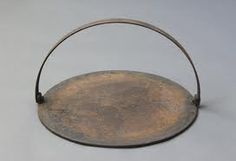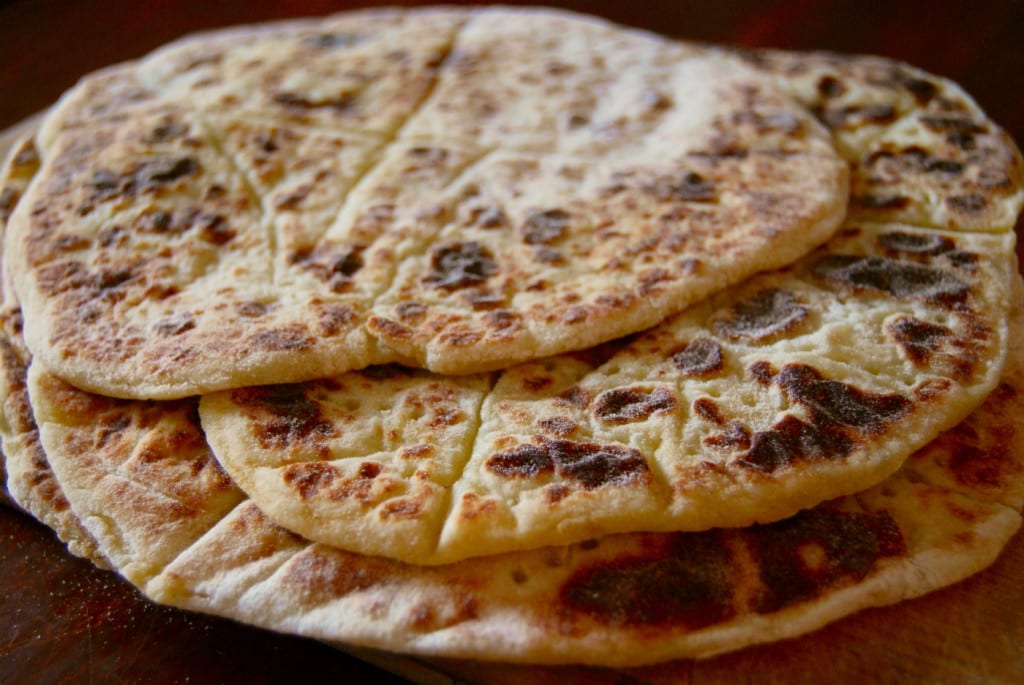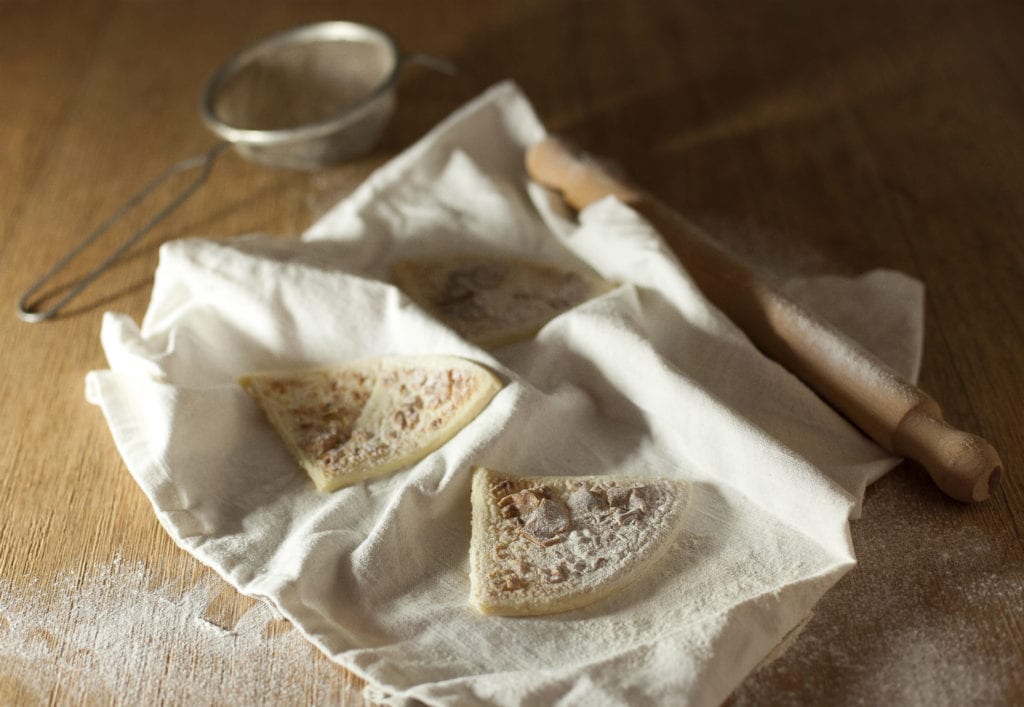Potato scones are dearly loved by anyone who has grown up eating them in Scotland.
A weekend treat, they are closely associated with a good breakfast – either fried and sandwiched inside a morning roll with a square sausage, or as part of a full Scottish breakfast alongside the usual suspects of sausage, bacon, egg and black pudding.
The vast majority of potato scones are shop bought, so heating them up usually involves frying them, which makes them beautifully crispy; others toast them and some even put them under the grill.
However, the shop-bought variety is hugely different to those that are home made. The shop-bought variety tend to be rather stiff and salty, whereas hot potato scones made fresh are fluffy and soft.
In Scotland, the invention of potato scones was inevitable, combining the love for this ubiquitous tuber and the common use of the girdle to make one of the many varieties of flatbreads that occur in Scottish cookery’s rich history.

A Scottish Girdle. Picture: Pinterest
In her book Recipes from Scotland (1947), F. Marian McNeill explains: "In cottage homes, these scones are usually made just after the midday meal when the left-over potatoes are still warm."

Freshly made potato scones. Picture: Fraser Wright
These would be a treat to have with a strong cup of tea, where butter would have been spread on the potato scone when still hot and rolled up as you would when eating a Scottish crumpet.
Lady Clark of Tillypronie, who was renowned for her vast collection of recipes, wrote describing how good homemade, hot and fresh potato scones can really be – turning the most elemental and simple of baked goods into something special – after she was served them at Balcaskie House in 1880: "Looking like very thin pancakes well browned, but soft, not crisp, and come up warm, in a warm napkin folded like a pocket to hold chestnuts. Scones to be triangular shaped, i.e. a round, cut in quarters.
"If you wish these scones to be good and light, you must boil the potatoes expressly for them and not let them get cold after boiling, but use as soon as passed through a sieve. Add butter, flour, and salt, but no milk, as the moisture of the potatoes is sufficient. Mix up thoroughly; roll out; shape, cut, and bake on the girdle. Turn them once, to cook both sides."
There is a misconception that potato scones are something made with leftover mashed potato, which is just wrong, as cold mashed potato has a completely different texture to hot potatoes, and would produce something quite different.
To have soft and floppy potato scones you need to use hot, or warm at least, potatoes.
Potato scones are so simple, and so cheap to make so it is worth having a go if you have a bit of spare time at the weekend. And of course, they reheat extremely well if you want to have them fried.
The texture of these is similar to a roti, and could be used for a similar purpose – scooping up sauce from a stew, or dipping into soup.
First try them served hot spread with butter – it is plain but comforting and delicious.
Don’t be tempted to grease your pan, for potato scones are traditionally baked on a hot and dry girdle, otherwise they will become something more like potato cakes.
Use a mealy (floury) variety of potato, such as King Edward, as waxier varieties (that were not traditionally grown in Scotland) are not suitable for potato scones, they would produce a gummy sticky mess.

Picture: Naomi Vance
Ingredients:
• 500g floury potatoes all roughly the same size
• 100g plain flour
• 25g unsalted butter, softened
• 1/4 tsp salt
Method:
1 Put the potatoes in a pot unpeeled and cover with cold water. Try to get potatoes of a similar size so they cook evenly.
Cover with a lid and bring to a boil, then turn the heat down to simmer for 30 minutes, or until they feel soft when pierced with a sharp knife.
2 Drain the potatoes and leave them to dry and cool down for about 10 minutes.
When they are cool enough to handle, peel the potatoes, scraping away the skin with your hands.
3 Now mash the potatoes and incorporate the butter and salt. Make sure the potatoes are completely smooth.
Now work in half the flour using your hands.
4 When that has been well incorporated add the rest of the flour. You may need to add some more flour if the dough is a bit wet.
You want a fairly soft but not sticky dough.
Too little flour and you won’t be able to work it, too much the scones will be doughy and dry.
5 Heat up a girdle or heavy based frying pan over a medium high heat so it is ready to go.
6 Now divide the dough. I quartered it to make 16 scones, a size similar to shop bought ones, however you could divide it into 6 to make slightly smaller scones which would be easier to work.
7 Roll out each piece to half a centimetre thickness on a floured surface. Then immediately transfer it to the girdle – you do not need any fat to cook them.
8 Prick the scone all over with a fork. Bake them on either side for 3 – 4 minutes.
You want to cook them fast so they get a good colour on the outside, but also not so fast that they burn and stay raw in the middle.
9 You can flip them more than once to make sure they are thoroughly cooked. Serve hot spread with butter, or store in the fridge to be re-heated in a frying pan for breakfast.
• See more of Fraser’s recipes at www.redbookrecipes.com/
A history of the square sausage, including a recipe for making your own
A history of Clapshot, including a recipe for making your own
A history of the Selkirk Bannock, including recipe for making your own